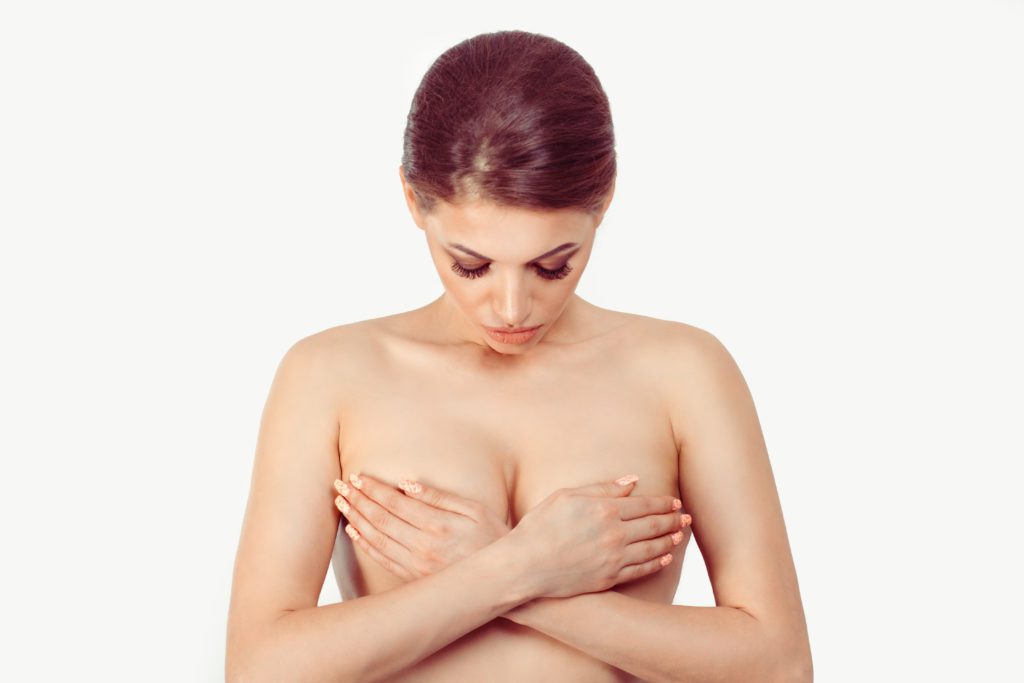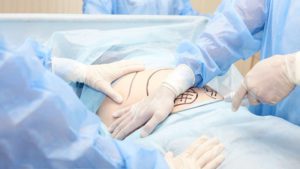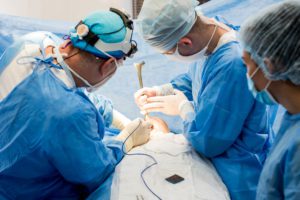Dr Barretts Tips for The Ultimate Brazilian Butt Lift Recovery
Congratulations! We’re sure you’re feeling pretty uncomfortable right now, but rest assured: you’re on your way to your new self! But first. you’re going to
Receive Free Shipping On Orders Over $200!


Congratulations! You’ve just made a life-changing decision to look and feel your best, and you’re on your way to your new self! But you’re going to go through some ups and downs while you recover from breast reduction surgery before you get your full results. Thankfully, Dr. Barrett has curated a whole host of breast reduction recovery tips, best practices, next steps, what you should expect, things you should be concerned about, as well as what to do and what not to do while you recover from your fat transfer breast reduction.
First things first: your breasts are going to look very swollen (and maybe even have some rippling), so don’t confuse this for your final results! It’s going to take at least six weeks for them to start looking normal. And don’t worry: soreness on the sides from the liposuction is also completely normal. Be sure to watch out for: nipple appearance, nipple color, nipple temperature, and nipple necrosis. If your nipples get cold and dark, call your surgeon.
1. Due to all the numbing medications used during your breast reduction, you shouldn’t have a lot of pain, but you might feel a little uncomfortable. This should subside as the first night progresses and get better by the next day. If you are experiencing any pain, you can take Tylenol or CBD oil. Dr. Barrett recommends (and personally uses) Wild Health CBD to all his plastic surgery patients.
2. Yes, it’s normal:
a. Speaking of pain, it’s normal in the first couple of months after your breast reduction surgery to have some pain in either general or specific parts of your breasts. As long as it’s improving over time, it’s nothing to be too concerned about (and massage helps!)
b. Anxiety and even depression are all normal the first week or two following your surgery.
3. Stitches will be removed at week one and two, and you’ll be taping the incisions for six weeks (don’t worry, your surgeon should show you how!

4. After two weeks, you can ditch the loose-fitting sports bra or t-shirt you’ve been wearing and begin wearing supportive bras
5. Starting at two weeks post-op, you can start adjuvant therapies like the Venus Legacy: a multipolar, radiofrequency skin-tightening treatment with pulsed electromagnetic fields that optimizes liposuction results and speeds up healing
6. It’s OK if your steri-strips fall off; you can simply replace them with a band-aid. Swelling may occur, causing a blister to form under your steri-strip—this is totally OK; just apply antibiotic ointment twice a day and the strip will be removed in-office. If you develop an allergic reaction to your steri-strips, remove them all, wash with gentle soap and water and take Benadryl or Claritin. Avoid steroids or hydrocortisone.
7. Work it out—or don’t (at first).
a. For the first two weeks, just do some light waking. Starting the day of your surgery, do it three times a day, every day—but keep it under a mile.. You don’t want to raise your heartrate, so no strenuous activities and be careful walking up stairs.
b. After two weeks, you can resume some exercise: walking upstairs, incline workouts, isolated leg workouts. Avoid any upper body workouts.
c. After four weeks and beyond, you can do some light jogging. And at week six, you can resume upper body and core workouts.
d. Most importantly, pay attention to your body! If something hurts, take a day or two off before easing back.
1. Do take a shower 24 hours after your breast reduction surgery. Don’t take a bath, go in a hot tub, swim, or get into any body of water. The bacteria and pressure of the water can cause an infection.
2. Do be your healthiest self. Things like meditation to lower stress, avoiding smoking for at least six weeks and avoiding any alcohol for at least two weeks will all help aid in your breast reduction recovery
3. Don’t smoke for at least six weeks
4. Do avoid alcohol for at least two weeks
5. Don’t forget the patch! Take off the scopolamine patch behind your ear as soon as you get home—but make sure not to touch your eye and wash your hands immediately after doing so. Leaving it on will cause blurry vision.
6. Do take your antibiotics as soon as you get home, and make sure to finish the full course—most infections occur when patients don’t take all their antibiotics as prescribed
7. Do get your beauty sleep. For the first three nights, sleep with your back upright to help some off the initial swelling go down. After that, you may sleep flat on your back. Avoid sleeping on your side until the seven-day mark and on your stomach until six weeks post op.
1. Don’t expect your liposuction results to look good right away—in fact, it might look worse for the first two weeks
2. Your bruising and swelling might extend down to your legs. Don’t worry—this is totally normal!
3. Swelling in certain areas can last from three to six months
1. Notice one breast is dramatically bigger than the other;
2. Have a severe body rash or severe pain, especially if it’s on one side;
3. Have a fever over 101 degrees;
4. Have significant bleeding or drainage from any incisions;
5. Any redness that spreads out from your incision;
6. Have persistent nausea, vomiting and can’t keep anything down

To ensure you have the best possible outcome, Dr. Barrett has some supplement must-haves he recommends for all his patients. We already touched a bit on Wild Health CBD above, and it’s really a game-changer for pain management, anxiety and sleep. Magnesium Breakthrough is also essential to control the muscle spasms that may occur as you recover from your breast reduction. It can also help with constipation and sleep. Arnica Recovery Complex contains both arnica and bromelain, and is an effective, holistic way to decrease the inflammation after surgery that occurs in your body without causing a leaky gut that can happen with traditional anti-inflammatories like ibuprofen or aspirin. Formulated to provide the optimal level of nutrient support, for enhanced recovery after surgery, Healfast Post-Op gives your body the necessary nutrients to heal and helps you detox from anesthesia, in addition to also reducing swelling, bruising and inflammation, and aiding in pain control. MassZymes, a digestive enzyme supplement, breaks down the debris created from the wound healing process, improves tissue remodeling and actually reduces the lab markers of inflammation, making it one of the best supplements for healing after surgery. Finally, starting at two weeks post-op, you should start using scar gel. Skinuva® is surgical scar healing cream that’s backed by science and uses highly selective growth factors which are shown to be twice as effective as silicone cream.
Dr. Barrett has also curated an ultimate recovery kit to set his breast reduction patients up for surgical success with the least amount of down time and discomfort possible.
Note: The following video is intended for only Dr. Barrett’s patients exclusively. If you have had surgery by another surgeon please follow up with that surgeon for particular details about your surgery.
You can also check out this video to hear tips, tricks and post-op instructions from Dr. Barrett himself.
Congratulations! We’re sure you’re feeling pretty uncomfortable right now, but rest assured: you’re on your way to your new self! But first. you’re going to
Whether it’s elective or not, inflammation or swelling after surgery is a reality anytime you go under the knife. Inflammation, which is actually an inflammatory

When it comes to any surgery, planning for after the procedure is the answer to a speedy and comfortable recovery. Preparing ahead helps to reduce stress. Taking


Congratulations! We’re sure you’re feeling pretty uncomfortable right now, but rest assured: you’re on your way to your new self! But you’re going to go


For some, making the decision to change their body through breast reduction surgery is an easy one; for others, there can be months or even years of


Congratulations! We’re sure you’re feeling pretty excited (and maybe more than a little nervous) right now, but rest assured: you’re on your way to your
Always consult with your physician before using
any of the products and materials available for purchase on our website.
Always consult with your physician before using
any of the products and materials available for purchase on our website.
A Dr. Daniel Barrett company
Visit:
www.drdanielbarrett.com

